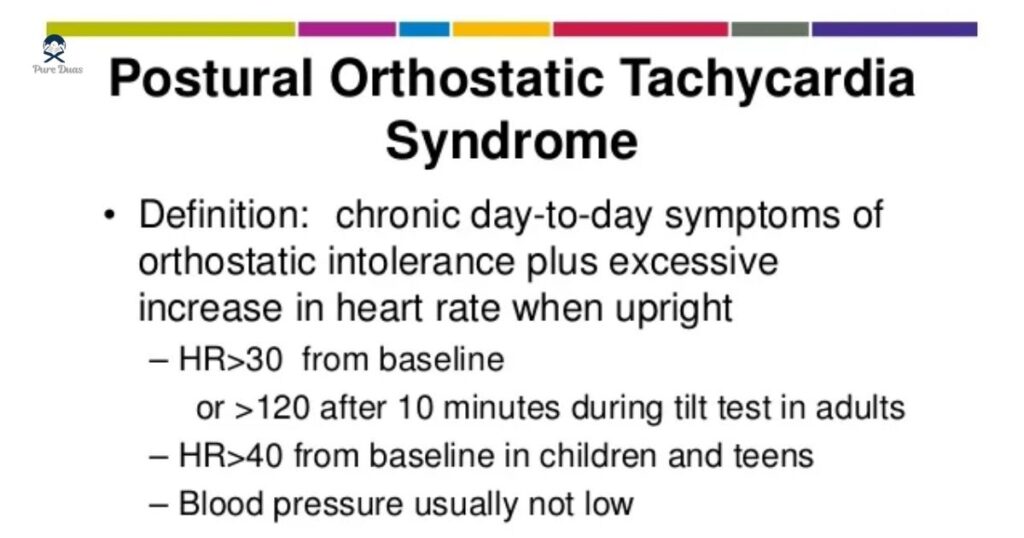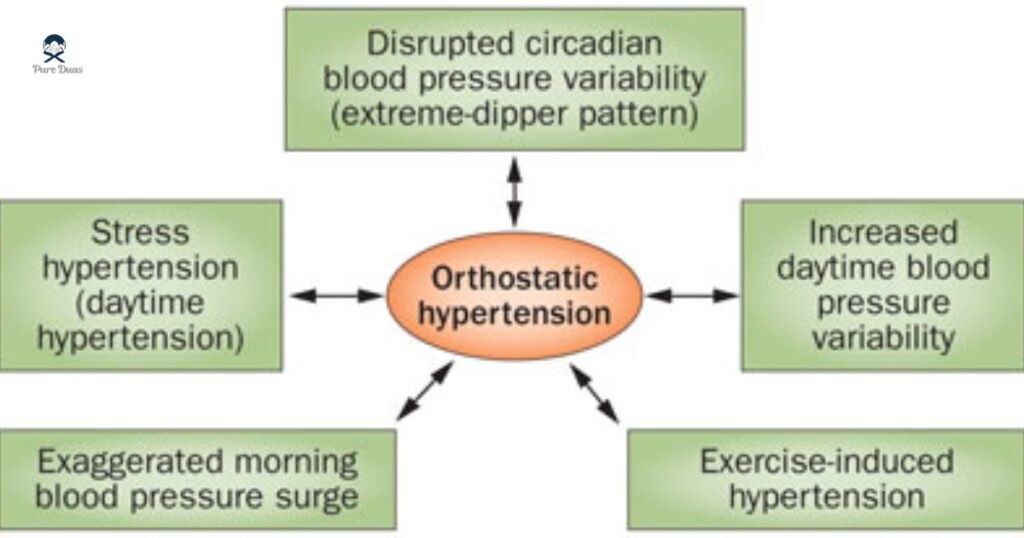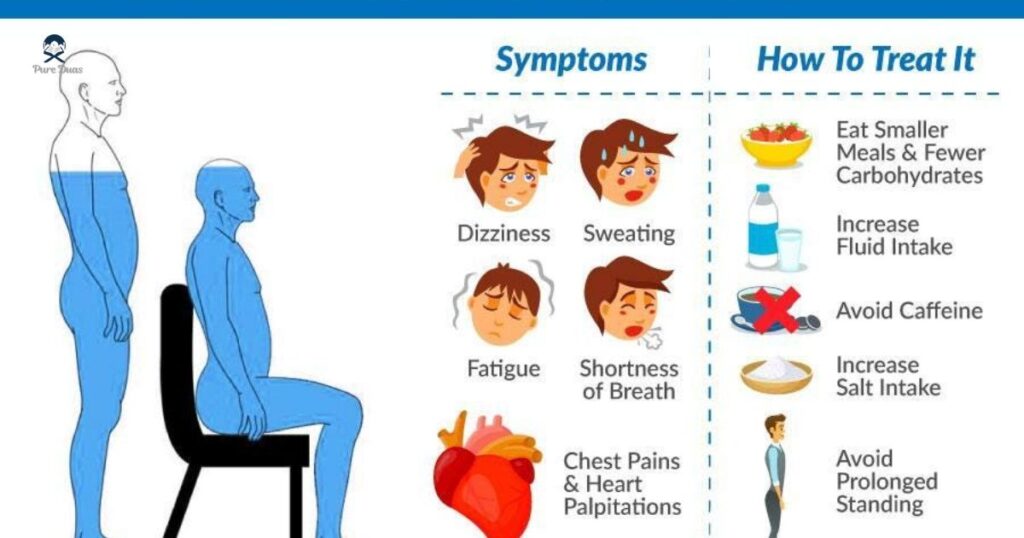Being a survivor of Postural Orthostatic Tachycardia Syndrome may be tiresome, puzzling, and at times disappointing. You may be wondering how to continue working, attending school or family when you are fighting dizziness and lack of energy. This is why it becomes necessary to find some helpful tips for living with POTS. These are tips to provide you with practical means of controlling your condition, relieving flare-ups, and feeling more in control about managing your health. You can begin to feel confident and stable in your daily routine again by concentrating on minor achievements such as coping with POTS symptoms and making intelligent decisions on a daily basis.
The term daily life with POTS refers to the tips for living with POTS with such difficulties as a fast heart rate, brain fog, and lack of energy. It encompasses all activities of waking up to eating, as well as figuring out how to have a balanced rest and exercise. Learning to change your lifestyle and applying appropriate POTS strategies of coping can make you feel better and independent.
In this guide, you will learn helpful tips for living with POTS, that can help you live with POTS that take into consideration all aspects of your life. We will discuss how to cope with POTS everyday life, how to manage the triggering factors, and how to establish habits that will diminish the stress levels and enhance resiliency. You will get to know about hydration, nutrition, movement, rest, and emotional well-being, and all that in clear and supportive language that you can rely on.These insights meet you at your level and give you support and practical actions to help you live with POTS more easily each day.
POTS Symptoms and Prescriptions
Many individuals first notice POTS symptoms as dizziness or a rapid heartbeat when they stand up.Such warning signs usually are frightening since they appear abruptly when a person is going about his or her daily activities. By learning about the common POTS triggers like dehydration, standing too long or heat exposures, you can prevent flare-ups. Being aware of the initial symptoms of fatigue or brain fog will allow you to react quicker and be safe. Knowing the causes of POTS helps you feel more ready to take charge of your health.
Doctors often prescribe medication for POTS patients when lifestyle changes don’t work.Others medicate POTS syndrome such as using beta-blockers to slow down the heart rate or salt pills to increase blood volume. The others depend on non-pharmacological approaches to POTS like compression stockings or the supplementation of fluids and salt. Never forget to visit a physician whenever you experience POTS, particularly when the symptoms become more pronounced or disrupt your normal lives. With an effective treatment plan, you will be able to ease the pain and live with your condition without any fear.
POTS Quality of Life

Living with POTS regularly involves the need to learn new methods of performing simple tasks. Daily struggles such as not having enough time to stand in long queues or prepare meals are some of the POTS challenges that many people experience. Taking rest breaks and spacing out activities will help save money. These adaptive living strategies of POTS enable you to go on with school, work or hobbies and you do not feel defeated. Creating habits that make you feel good will assist you to continue on the journey with faith.
Proper emotional health is as necessary as physical attention.Chronic fatigue and dizziness in POTS often affect mental health, making you feel discouraged. Joining POTS support groups or talking to a therapist can ease stress and loneliness. By living well with POTS, you care for both your symptoms and your emotional well-being. One way you can enhance your feeling of independence is through self-advocacy on behalf of helpful tips for living with POTS patients, which allows you to request what you need in the home or workplace.
Tips for Living with POTS
Real-life habits may help in a significant way of living with POTS. Basic POTS management ways such as taking up more water, compression socks, and not standing up for long periods can help prevent a flare-up. The development of a personal self-care routine about POTS will enable you to monitor the triggers and organize your day according to your energy levels. You can make the house more comfortable by regulating the room temperature, steering clear of bright lighting and sleeping when necessary.
Learning to adapt may seem empowering. Identify POTS coping mechanisms that can accommodate your lifestyle, including a relaxed seat exercise or taking brisk walks outside. Energy saving measures can assist in saving up strength to be utilized in other critical things. In the case of a flare, apply the reliable POTS home remedies such as electrolyte beverages and high-lying rest positions. With the help of these habits integrated into the everyday routine, one can take gradual steps towards a better quality of life with POTS without giving up.
Light
Natural light is able to uplift your mood and increase energy levels, so getting enough of it to use POTS is possible.Morning sunlight supports your POTS-friendly circadian rhythm and helps improve sleep quality. Step outside or sit near a sunny window early in the day. Basking in sunlight can reduce fatigue and keep your body clock steady. Regular light exposure becomes a small but meaningful part of living with POTS every day.
When sunlight is limited, doctors may recommend light therapy to mimic natural rays indoors. A light therapy box can gently wake you during darker months. Remember, natural light benefits POTS patients by helping balance hormones that affect sleep and energy.Always do not expose yourself to the harsh sunlight during the middle of the day as it may overheat you. Being conscious about the amount of light people take in every day can help make the process of sustaining mood and health in general simpler.
Movement
Light exercises in treating POTS also assist in muscle building and circulatory exercise without burdening the body. Sitting pose, gentle yoga or brisk walks will ease the dizziness with time. Begin with slow, easy activities so as to avoid immediate increases in heart rate. POTS can be trained to make a regular routine of moving to help build stamina and lessen the exhaustion of everyday activities.
Regularity is important to exercise tips in patients with POTS. Stay away from vigorous exercise that may lead to a flare-up or exacerbate the symptoms. Rather, emphasize safe movement of POTS management such as recumbent cycling or water aerobics. Five or ten minutes of directed movement can make you feel better and do better.
Nutrients
Proper nutrition among POTS patients improves the energy levels and helps stabilise blood pressure.Eat meals with lean protein, whole grains, and fresh vegetables to keep your strength steady throughout the day.You can add additional salt as recommended by your doctor, this helps to boost blood volume and lower dizziness. You can prioritize balanced meals containing all the nutrients that POTS patients need so that your body does not feel starved or exhausted.
Heavy meals are often replaced with small and frequent meals. Combine nutrients that are POTS-friendly with lots of fluid to keep you hydrated all day. Pay attention to healthy snacks such as nuts, yogurt, and fruit to keep the energy level constant. Healthy eating habits timely and properly balanced with nutrients to suit POTS patients minimizes brain fog or weakness symptoms. Listening to the needs of your body assists you in building a better supporting daily diet.
Mindset
The positive attitude towards POTS patients can have a great impact upon the way you cope. Giving attention to little successes makes you feel that you are in control of your progress. Give yourself and express gratitude and compassion on bad days to develop emotional resilience. The attitude of encouraging POTS patients can encourage you not to give up regardless of the fluctuations.
Affirming your daily life helps you stay positive, and mindfulness shifts your focus away from frustration. Supportive friends or joining a POTS mindset group can boost your motivation. POTS patients have a strong mind set, which decreases stress levels since stress tends to exacerbate symptoms. The ability to train your mind to be patient and hopeful forms a powerful basis of long-term health.
Love
Developing the network of love and support around POTS patients help the patients lessen the burden of the condition. Listening to family members and friends makes you feel secure and understood. Being open about your journey welcomes more benevolence and tolerance of the people surrounding you. The emotional health of POTS patients is reinforced by a constant feeling of love and support, which helps the patient have a calmer mind.
Self-love acts are of equal importance. Engage in self-care practices such as resting, journaling or take a warm bath when necessary. Remind yourself that you need compassion and respect every day. Taking care of POTTS patients and loving them first should be prioritized, and even advocating your needs without feeling guilty. Loving oneself and others creates a strong emotional base to overcome the challenges.
Breathwork

Breathwork to relieve POTS can be relaxing and reduce the stress levels. Lightheadedness can be decreased by deep breathing exercises that can also stabilize the heart rate. Start with deeper breathing with slower breathing in and more breathing out. Consistent breathing exercises to relieve POTS can be a stable weapon to deal with anxiety or episode discomfort.
Exercises that involve breathing are convenient. Attempt controlled practices including belly breathing or the 4-7-8 practice when taking rest breaks. Breathwork to relieve POTS When a flare is coming, use breathwork to bring your body to the ground. Every day mindful breathwork exercises provide your body with training on how to react to symptoms more calmly. Breathwork is also an empowering component of your care plan, based on simple but consistent techniques.
Water
One of the most effective but most basic habits that POTS patients can apply is staying hydrated by ensuring they take enough water. Consuming water during the day will allow an increase in the volume of the blood and relieve dizziness. Have a bottle in place so that you are reminded to have the little sips frequently. Regular water consumption among the POTS patients decreases exhaustion and promotes wellness.
To further benefit your water, add electrolytes that will give your water an added source of hydration, particularly during hot days or days when you have been lightly active. Hydration strategies can also assist POTS patients to drink regularly using hydration techniques such as setting hydration reminders on your phone. The need to promote water consumption among the patients of POTS allows managing the symptoms and ensuring a stable level of energy. Hydration is one of the main priorities of health improvement.
Rest
Getting sufficient rest among POTS patients will aid in your body to recover and deal with stress in everyday life. Make it a time to relax and have a dark sleeping space and a regular bedtime. Short daytime breaks also assist with maintaining constant energy. Being a priority with POTS patients, making rest can help decrease dizziness and brain fog in the long run.
Good rest does not only have to be slept at night. Do some mild forms of relaxation including stretching or playing soft music before sleep. Do not take caffeine after a long day as it will lead to lack of sleep. Developing habits of rest among the POTS patients enhances their mental and physical capacity.
Wellness
Wellness has become an essential approach to treating POTS patients, which is taking care of your body, mind, and emotions. Get into small routines such as eating well, drinking water, and engaging in less vigorous activity to develop life-long health. Regular wellness focus on POTS patients will serve to minimize the occurrence of an attack and improve your overall resilience.
Emotionally, practice mindfulness, i.e. journaling, meditation. Get community support when you are discouraged or need support to be consistent. Wellness in POTS patients should be prioritized to ensure that small changes in lifestyles are made into meaningful steps toward a healthy life.
Physician
Treating POTS through the help of a well-informed doctor is a lot less stressful and easy to do. Be open about your symptom history to make your doctor able to direct you properly. Developing a confidence relationship with your doctor to treat you POTS will have your care plan that will be unique to you.
Frequent exams enable your doctor to change drugs or treatment when your condition varies. Monitor the symptoms and to be informed and ask questions at every visit. Continuous communication with your doctor regarding the treatment of POTS helps you feel encouraged and sure that you are doing well in your health.
Healing from POTS

The process of healing due to POTS in itself demands patience, persistence, and small daily progress. Integrate lifestyle modifications such as hydration, nutrition, and mild physical activities with regular medical counseling. Positive thinking contributes a lot to your healing process when you get better with POTS on your own and wake up happier every day.
Keep yourself motivated by celebrating little achievements such as reduction in dizzy spells or improved sleep. You should not compare your progress with others but concentrate on your own progress. Having consistency in your efforts is a natural way to make progress in healing POTS achievable and is a long-term motivating factor.
Conclusion
Living with Postural Orthostatic Tachycardia Syndrome can feel overwhelming, but the right steps can make life more manageable. By focusing on helpful tips for living with POTS, patients can take control of their health instead of feeling trapped by symptoms. Learning how to balance daily life with POTS,such as staying hydrated, eating nutrient-rich meals, and pacing activities,builds strength over time. Each change, even small ones like adjusting your sleep routine or practicing mindful breathing, makes a real difference. Managing symptoms with guidance from your doctor, while leaning on loved ones for support, helps you feel less isolated. Understanding your limits and listening to your body allow you to live a fuller, more confident life with fewer setbacks.
The journey toward wellness is not the same for everyone, and that’s okay. What matters is being consistent with these POTS coping strategies and focusing on progress rather than perfection. With compassion for yourself, you can embrace positive lifestyle habits that lead to better stability, improved energy, and renewed hope. By combining medical care, self-care routines, and emotional support, you create a strong foundation for living well with POTS. Over time, these efforts transform challenges into opportunities for growth, helping you reclaim control and experience a higher quality of life.
Frequently AskedQuestions
What is the main cause of POTS?
POTS often happens because of issues with the autonomic nervous system, low blood volume, or after infections, injuries, or hormonal changes.
Can POTS be cured completely?
There is no complete cure yet, but helpful tips for living with POTS and proper treatment can greatly reduce symptoms over time.
What daily habits help manage POTS symptoms?
Staying hydrated, eating more salt if advised, pacing activities, resting often, and gentle exercise are effective POTS self-care tips for symptom control.
When should I see a doctor for POTS?
See your doctor if dizziness, rapid heartbeat, or fainting worsens despite using POTS coping strategies and lifestyle changes at home.
Does exercise make POTS worse or better?
Light, supervised exercise like seated workouts or swimming usually helps in managing POTS symptoms, but overexertion may trigger flare-ups, so pacing is crucial.
Read More Blogs:Pure Duas
